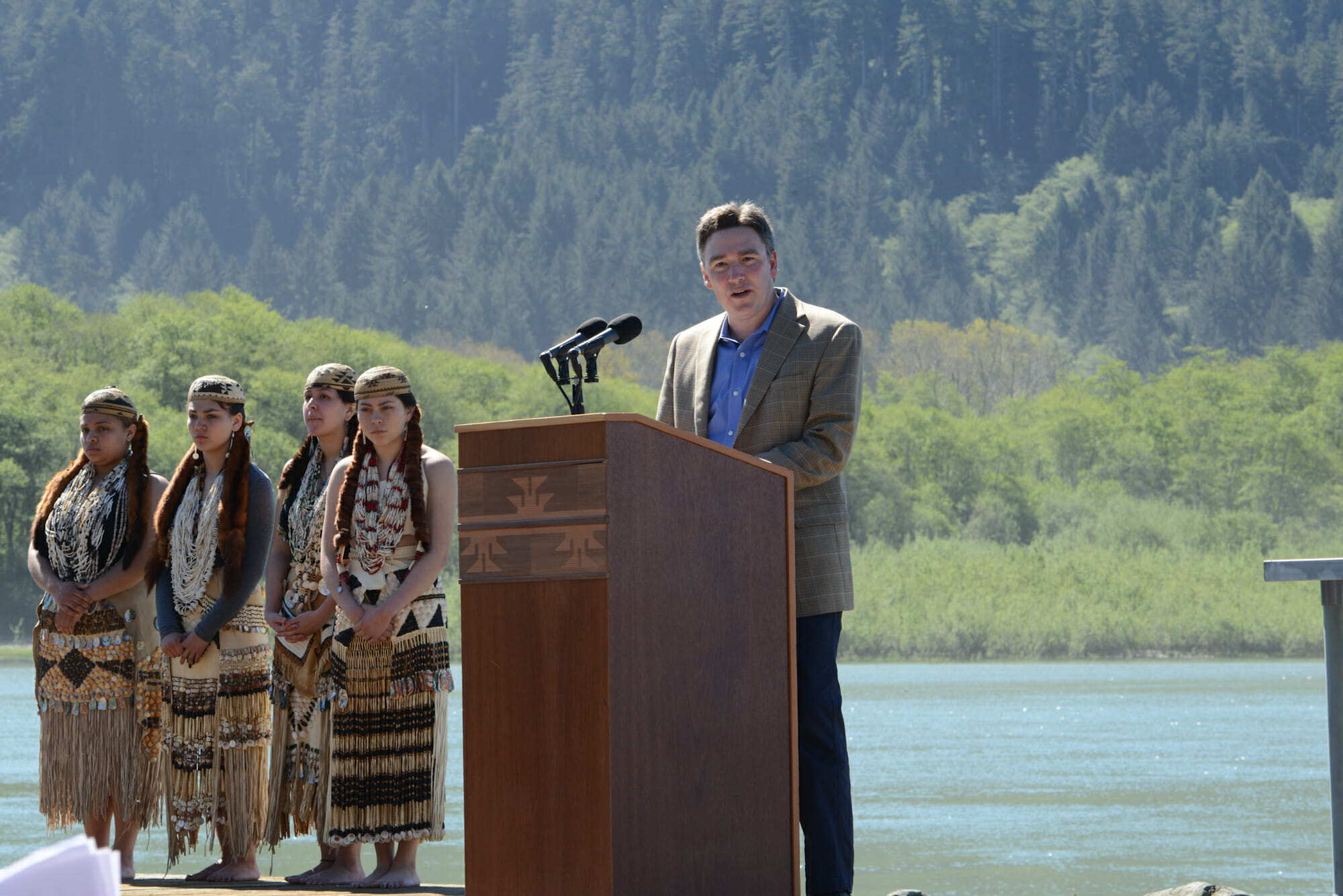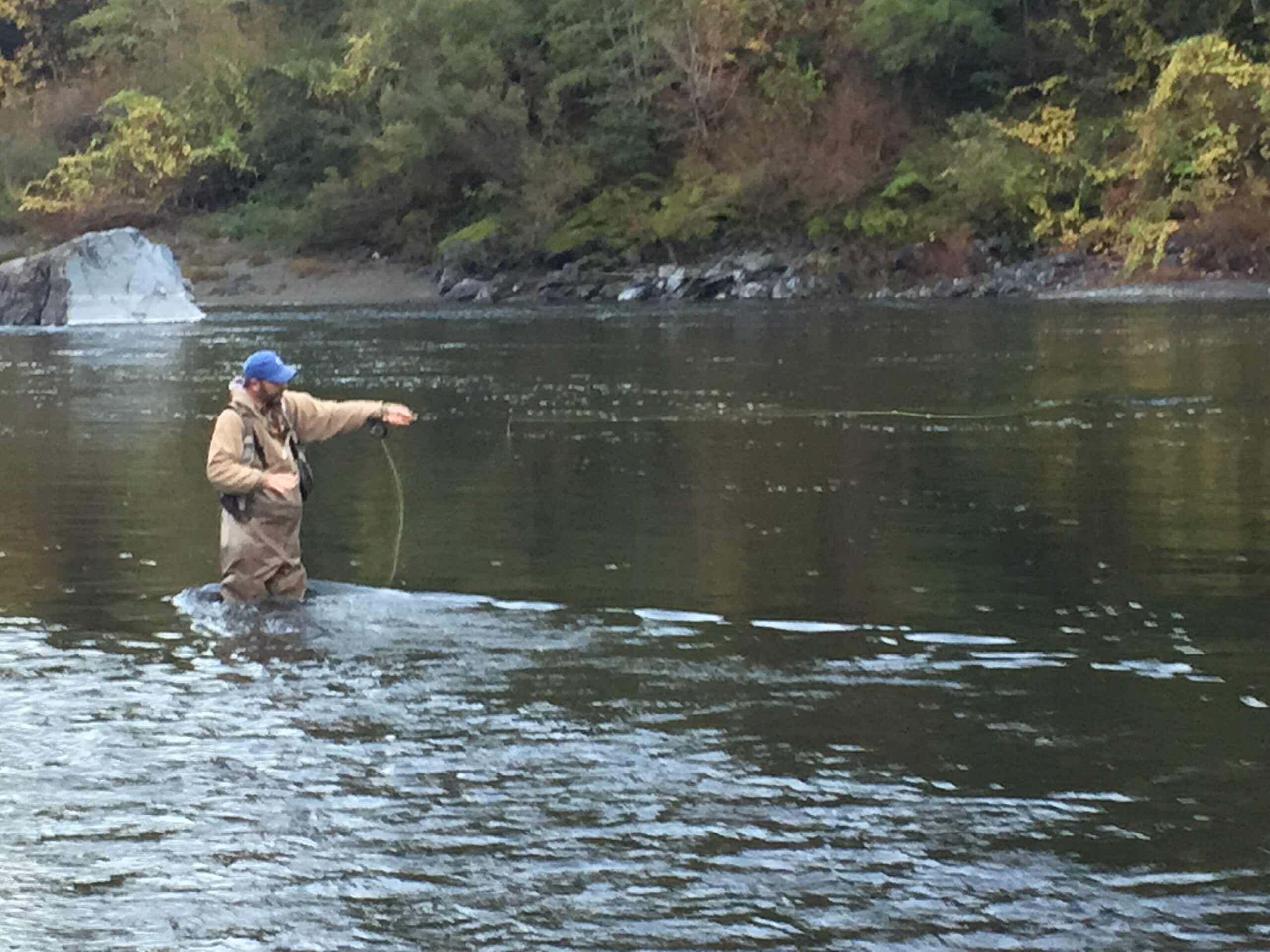TU’s Tim Frahm swinging on the Klamath River near Weitchpec.
The legendary Klamath River is the third most productive watershed for salmon and steelhead on the West Coast, after only the Columbia and Sacramento Rivers systems. The Klamath is also Ground Zero for one of the most challenging water conflicts in U.S. history.
Trout Unlimited’s California Director, Brian Johnson, and Oregon Director, Chrysten Lambert, have been key players in negotiations that have led to several ground-breaking agreements regarding water use and management in the Klamath Basin. Today, the esteemed water news outlet Water Deeply published an interview with Johnson and Lambert which articulates why TU remains committed to a comprehensive water solution for the Klamath beyond simply removing four old dams below Klamath Lake, and how we are working to achieve it.
The Water Deeply interview highlights TU’s extensive investment—nearly two decades—in developing and implementing cooperative solutions to the Klamath Basin’s water challenges. Over that time our efforts helped produce several ground-breaking agreements to provide more water security for upper basin agriculture, wildlife refuges, and tribes while advancing major restoration actions (including removal the four dams, which will reopen over 400 miles of historic habitat for salmon and steelhead).
 (R) Brian Johnson speaking at the KHSA signing ceremony
(R) Brian Johnson speaking at the KHSA signing ceremony
Two of these agreements have been adopted: the Klamath Hydroelectric Settlement Agreement (KHSA), which provides for the transfer of ownership of four dams below Klamath Lake from PacifiCorp to the Klamath River Recovery Corporation and the decommissioning and removal of those dams, and the Klamath Power & Facilities Agreement (KPFA), which formalizes the support of Congress for collaborative actions to advance the recovery of Klamath River fisheries, uphold trust responsibilities to the tribes, and sustain the region’s farming and ranching economy. TU is a signatory to both agreements.
But a comprehensive agreement for water sharing in the upper Basin remains unfulfilled, after Congress failed to authorize it in 2015. TU and other key stakeholders have since redoubled our efforts to achieve that agreement’s twin goals of greater water security for people and recovery of salmon and steelhead runs in the Klamath.
Years of stubborn drought, the current warming trend, and crashing anadromous and inland fish populations have all contributed to chronic water shortages in the Klamath Basin and ongoing tension between upper Basin irrigators, tribes, water managers and fishing and environmental interests. See this joint statement from TU, the Pacific Coast Federation of Fishermen’s Associations, California Trout, the Northern California Council of the International Federation of Fly Fishers and American Rivers, released on the day the KHSA was signed, for an articulation of TU’s unwavering commitment to a “basin-wide solution for water sharing, water supply infrastructure, and habitat restoration.”
 (R) TU’s Chrysten Lambert (on right) and Nell Scott at a fish screen project on Elevenmile Creek, upper Klamath Basin
(R) TU’s Chrysten Lambert (on right) and Nell Scott at a fish screen project on Elevenmile Creek, upper Klamath Basin
Lambert has led TU’s habitat restoration efforts in the upper Klamath watershed for fifteen years (formerly as executive director of the Klamath Basin Rangeland Trust, which merged with TU in 2016). This program has produced remarkable results, scoring millions of dollars in restoration grant funding and developing collaborative partnerships with ranchers, farmers and private landowners to improve fish passage and water quality, enhance dry season streamflows, and restore instream and riparian habitat. Among other achievements one of Lambert’s water rights transfers remains the single largest such transfer to benefit instream flow yet accomplished in Oregon.
In addition, on August 6 Lambert announced that TU has been awarded four major grants from the National Fish and Wildlife Foundation for projects in the upper Klamath River Basin that will restore and improve instream and riparian habitat and enhance migration for native fishes in this stronghold for native redband and bull trout. These grants total more than $675,000 and will underwrite work to restore water quality, water quantity, and aquatic and terrestrial habitats in the Wood and Sprague Rivers and the Elevenmile and Crane Creek drainage for the benefit of fish, wildlife, and local communities.
Restoring the Klamath River and ensuring greater water security for the residents of this basin is one of TU’s highest conservation priorities. As Lambert stated in a press conference in 2017, “Over the last 16 years, a broad coalition of irrigators, conservationists, and tribal interests have worked to resolve some of this Basin’s most critical water issues. Over that time most of us have developed a shared vision of the future. We remain convinced that our interests are bound together. For any of us to succeed, we must all succeed together.”



